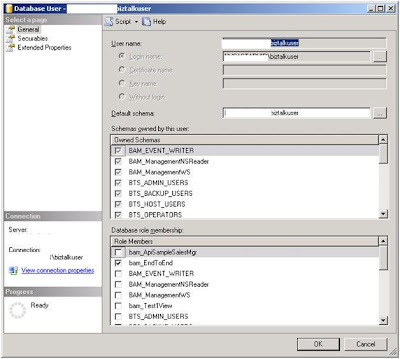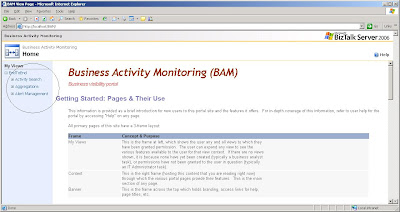1) Install SQL 2005 sp2
2) Ensure Analysis Services is installed (Else cubes/aggregations can't be created)
3) Do not forget to Configure BAM tools to "Enable Analysis Services for Aggregation" using Biztalk config tool. (Else cubes/aggregations can't be created)
4) Ensure that account being used is a member of the Group that is configured in Biztalk Config tool for BAM portal. (Else views in BAM portal may not be visible to the user )
5) Ensure that the user account under which BAM Application Pool is running is member of Biztalk Isolated Host and IIS_WG group.
6)Run following commands: (Else you may get 401 authentication error)
- cscript adsutil.vbs SET w3svc/NtAuthenticationProviders "NTLM"
- setspn -A HTTP/servername domain\account
- setspn -A HTTP/servername.fullyqualifieddomainname domain\account
domain\account is account under which BAM App Pool is running on IIS.
cscript can be found under: C:\Inetpub\AdminScriptssetspn.exe can be found under the Windows 2003 CD-ROM at \support\tools\suptools.msi
If you view the BAM portal but can't view all the "VIEWS" you created. It is most likely that the account you are using does not have permissions on "BAMPrimaryImport" table. Add that account (i.e, biztalkuser) and then assign the role (view) you want that user to see on BAMPortal. Check the image below:

In the image above. The user (biztalkuser) only have permission for bam_EndToEnd. If you want this user to see other views that you can for example click on "bam_Test1View". User will now be able to see both views on BAM portal. This way you can selectively grant users access to different views(roles).

Please note: SQL 2005 creates Roles. You just have to assign them to the appropriate user. SQL 2005 does not supports concept of "Groups" anymore. Instead use Roles.

_511.gif)
_530.gif)

No comments:
Post a Comment